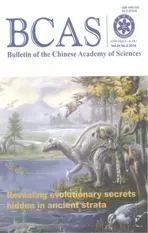Ongoing Research Projects at IVPP (A Selection)
2010-12-30JeholBiota
Studies on Jehol Biota
Jehol Biota; vertebrates; origin; radiation; geological background
Chief Scientist: ZHOU Zhonghe
Email: zhouzhonghe@ivpp.ac.cn
Based on previous studies and findings, this project aims to conduct a systematic and comprehensive study of the Jehol Biota, in order to achieve a better understanding of the biodiversity of this biota and its evolutionary and geological implications, to complete and detail the geochronological framework of its evolution, and to further investigate the evolutionary processes of Mesozoic vertebrates and their relationships to the paleoenvironmental background.Some of the major purposes of the project include: 1) On the basis of extensive field investigations and excavations of vertebrates in areas such as northern Hebei–southern Inner Mongolia, western Liaoning and Xinjiang, the team will systematically study important vertebrate taxa and their phylogeny in order to obtain a better understanding of their origin and early evolution; 2) By studying the process of the origin and radiation of the Jehol Biota, the scientists hope to revise or improve the hypothesis about its origin area and age; 3) The team hopes to further study the division and correlation of the Jiufotang Formation and other horizons by combining comprehensive stratigraphic, sedimentological and taphonomic studies of the Jehol Biota, and provide new perspectives into the reconstruction of the paleolakes and sedimentological background of the Jehol Biota; and 4) the team will study the biological responses of the Jehol Biota to global and regional geological events in the Early Cretaceous by focusing on the multidiscipline (e.g., paleontology,sedimentology, taphonomy, paleogeochronology,paleomagnetism and geochemistry) in order to further current understanding of the Early Cretaceous terrestrial ecosystem.

Studies on Pterosaurs from China
Key words: pterosaur; dinosaur; Jehol Biota; Cretaceous; stratigraphy
Chief Scientist: WANG Xiaolin
Email: wangxiaolin@ivpp.ac.cn
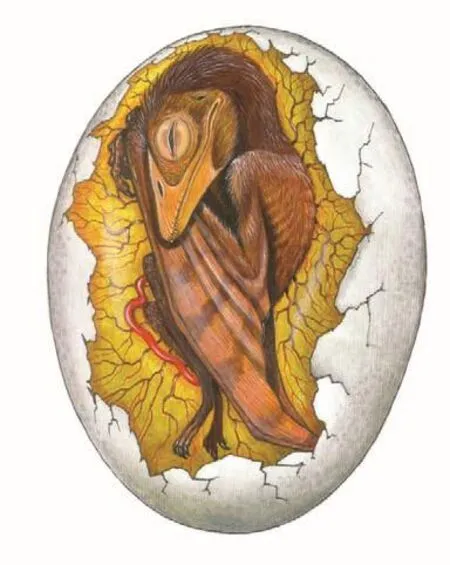
The project is focused on the further study on the Jehol pterosaur fauna, analyzing the Cretaceous pterosaur phylogenetics, functional morphology, diet and habitat on the basis of systematic description and taxonomy, and to achieve a better understanding of the characteristics of the pterosaur biodiversity.The team will conduct field excavations at the newly discovered pterosaur sites in China in order to study the composition of the pterosaur fauna in the involved region and discuss the relationship between its mass burial and the paleoenvironment, as well as the correlation between this fauna and the neighboring Wuerho pterosaur fauna and the Jehol pterosaur fauna.The scientists will also investigate the origin and radiation of some pterosaur groups,and compare the Jehol pterosaur fauna with those of Laurasia and Gondwana in order to discuss the paleogeographic significance of some major pterosaur groups.Furthermore,a more comprehensive study on the pterosaur embryo and juvenile specimens will be conducted to further the understanding of the pterosaur development.In addition,the project will examine the integuments preserved in various pterosaur specimens to analyze its physiological implications.Finally, the team will summarize the Chinese pterosaur morphology, taxonomy, distribution, systematics and paleogeography, and complete the geochronological framework of its evolution.
Faunal Transition of Paleogene Mammals and Its Relation to Major Paleoenvironmental Events on Mongolian Plateau
Key words: Central part of Nei Mongol; Paleogene; environmental change; turnover of mammalian faunas
Chief Scientist: WANG Yuanqing
Email: wangyuanqing@ivpp.ac.cn
The impact of Paleogene global changes on the continental environment and its relationship to the evolution of living things is among the hotspots in geological research in Europe and North America.However, such study has not been carried out systematically in Asia, and this has hampered the discussion of global environmental events.Central area of Nei Mongol (Inner Mongolia) in northern China has well-developed Paleogene fossilliferous deposits, and many widely used Asian Land Mammal Ages were named after the faunas in this area.Therefore, it becomes the key area in studying the inf l uence of Paleogene climatic change to both paleoenvironment and mammal evolution of eastern Asia.The primary research work of this project includes: 1) On the basis of the detailed and systematical biostratigraphical work, the project will improve the subdivision of mammalian assemblages and clarify the definition of related Asian Land Mammal Ages.2) Cooperated with the paleomagnetic dating, the project will establish the mammalian evolutionary sequence with date calibration.3) This project will also recognize the important environmental events through the oxygen and carbon isotope analyses, and correlate them with mammalian evolutionary sequence and local geochronological framework.On the basis of the accomplishment of the above work, the team is expected to achieve the purpose of this project―to recognize the impact and expression of Paleogene global environmental change in eastern Asia,and understand the response of mammalian evolution to the environmental changes.Results of this project will become the frame of reference in the related research of eastern Asia,greatly enhance our understanding of Paleogene environment and mammalian events in eastern Asia, and contribute significantly to the study of Paleogene global environmentalbiological events.

A Synthetic Study on the Mid–Late Jurassic Shishugou Fauna in Junggar Basin
Key words: Junggar Basin; Middle–Late Jurassic; Shishugou Fauna; origin and evolution; plaeonbiogeography
Chief Scientist: XU Xing
Email: xu.xing@ivpp.ac.cn
The Middle-Late Jurassic is a critical time period for the early evolution and diversification of several vertebrate groups and also for the establishment of the terrestrial biogeographical pattern, but the poor fossil record in the Middle Jurassic and early Late Jurassic hinders our understanding of these important issues.Based on the work over last eight years, the team plans to conduct a synthetic study on the Callivan-Oxfordian Shishugou Fauna in Junggar Basin, Xinjiang.The project aims to establish an accurate stratigraphical sequence and geochronology, to reconstruct the paleoenvironment and paleonclimate, to study the origins and early evolution of several vertebrate groups and their subgroups, to recover the composition, the geographical and temporal distribution pattern,and the evolution of the Shishugou Fauna, to analyze the evolutionary rates of the fauna and their possible relationships to the changing environment,and reconstruct the biogeographical pattern.These studies promise to improve our understanding of this poorly known, but critical time period for vertebrate evolution.

Response of Mammalian Evolution to the Neogene Climatic and Environmental Changes in China
Key words: mammals; Neogene; climate and environment; Tibetan Plateau; comparative study
Chief Scientist: DENG Tao
Email: dengtao@ivpp.ac.cn
The uplift of the Tibetan Plateau has direct and significant inf l uence on the climatic and environmental changes and the mammalian evolution in East Asia.The global expanse of C4plants is obviously related directly to climatic changes.Herbivore mammals developed hypsodonts from brachydonts in order to fit the increase of silicon in grass.The Neogene was a greatly variable period for the global environment,and the formation and development of the Tibetan Plateau was an important drive to the variation of the global climate and environment.Recognizing the distributive models and ecological features of the Neogene mammals from the Tibetan to the Mongolian plateaus is an effective method to realize the influence of the alteration of the uplift of the Tibetan Plateau to the geomorphology and climate in China as well as the inf l uence to the global climatic patterns.Mammals are very sensitive to climatic and environmental changes, and the Chinese Neogene mammalian fossils are advantaged in the world.The main regions studied by this research project, the Linxia Basin and the central Mongolian Plateau, are situated in the deposited and influenced areas respectively.They have well-exposed deposits to reflect the plateau’s uplift and paleoclimate, successive stratigraphical sequence, and very abundant mammalian fossils.A comparative study of these two regions will have scientific singnificance to understand a series of important environmental and eclogical events in the global Neogene, such as the uplift of the Tibetan Plateau, the formation of the East Asian monsoon, and the exchanges of animals and plants.

Origin and Early Evolution of Jawed Vertebrates
Key words: Silurian; Early Devonian; Gnathostomes; Evolution; Paleoenvironment
Chief Scientist: ZHU Min
Email: zhumin@ivpp.ac.cn
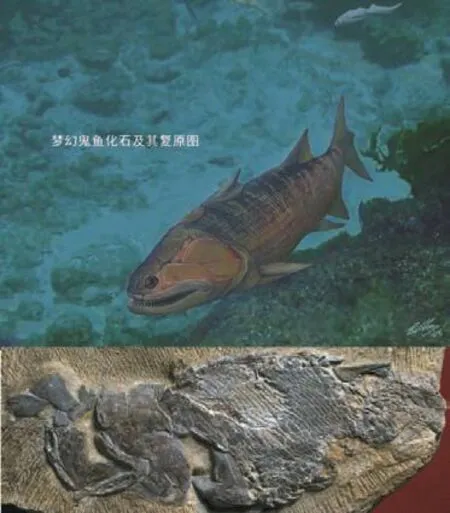
Osteichthyans, which fall into two major monophyletic groups, namely actinopterygians (bichirs, sturgeons, gars,bowfins and teleosts) and sarcopterygians (coelacanths,lungfishes and tetrapods), make up 98% of recognized living vertebrate species.The rise of osteichthyans from other primitive gnathostomes (jawed vertebrates) is a key transition in vertebrate evolution.Recent unexpected findings from China, especially Guiyu oneiros from the Ludlow (Silurian)of Yunnan, have provided further evidence that the search for modern vertebrate origins requires breaking out of the Devonian and into the Silurian.Efforts will be made to collect new materials of early gnathostomes including early placoderms and early osteichthyans from promising Silurian–Early Devonian fish localities in China.The project will include full-scale collection in previously known localities and extensive exploration of new outcrops.The field work will be followed by laboratory preparation and research to obtain critical information bearing on major transitions in early vertebrate evolution―the interrelationship of four major gnathostome groups(Placodermi, Acanthodii, Chondrichthyes and Osteichthyes),the origin and early diversification of osteichthyans, and the origin and early diversification of placoderms.Specifically,by exploiting the HXCT scanning facilities at IVPP, the project will help to establish the sequences of character acquisition leading to the origin of crown sarcopterygians.A solid phylogenetic scenario resulting from the planned project can also serve as a basis to explore related biogeographical problems, and test the interaction between major evolutionary events and environmental changes.The project will constitute a challenging and rewarding opportunity to bring about new breakthroughs in the study of early vertebrates, and related paleogeographical and paleoecological issues.
On Therapsids from Dashankou Fauna
Key words: Permian; Therapsida; Amonodontia; Dinocephalia
Chief Scientist: LIU Jun
Email: liujun@ivpp.ac.cn
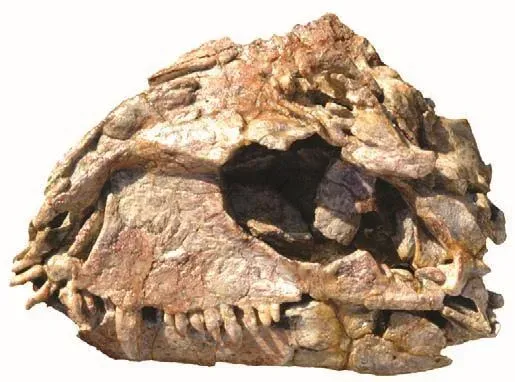
Therapsida is the advanced group of Synapsida, and is an important component on the tree of life.Paleontologists still debate on their interrelationships.Chinese Permian therapsids, especially those from the Dashankou Fauna, is a key to these issues.The Dashankou Fauna is the most primitive tetrapod fauna with therapsids in China and is dominant by the therapsids.Some therapsids in the Dashankou Fauna could be the most basal members of their groups; and they could fill the evolutionary gap or change the current phylogenetic trees.The team aims to search for more materials to increase the diversity of Permian fauna,detailedly study the available materials, position them on the phylogentic trees based on the comparison with the materials from other countries, especially those from Russia and South Africa, and discuss the evolution and interrelationships among major groups of therapsids.
The Comparative Study of Archosauromorpha from the Middle Triassic of Yunnan and Guizhou Provinces
Key words: Archosauromorpha; Triassic; terrestrial; marine; reptile
Chief Scientist: LI Chun
Email: lichun@ivpp.ac.cn
The Archosauromorpha, including the “thecodonts”(the early members of Archosauria, traditional name), the Protorosauria and the Neodiapsida form a major group during the reptile evolution.It is of great importance to the study of the early history of reptiles and the historical biogeography of the Mesozoic.Until 2005,the Protorosauria and the Neodiapsida fossils were never known in China, and the “thecodonts” was only briefly described from the terrestrial Triassic of North China.Archosauromorpha is mainly terrestrial with little exception, while both terrestrial and aquatic forms of this group were found in the marine Triassic of Yunnan and Guizhou Provinces most recently.The marine “thecodonts”put forwards a new look at the morphology, the phylogeny and the ecology of this bunch, and the well-preserved skeleton of terrestrial Archosauromorpha indicates the existence of an unknown Triassic land community in South China.Although all the known data on paleogeography of this area suggests a deep-water environment, a terrestrial biota or geological events are indicated by the new fossils of this project.
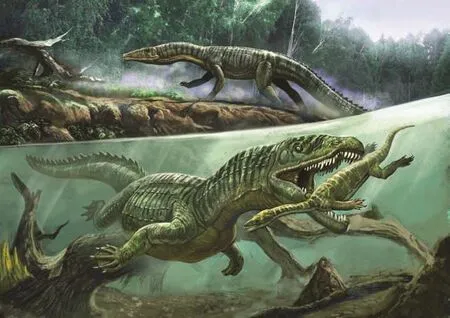
Studies on the Huanglong Cave, a Late Pleistocene Human Fossil Site in Hubei Province
Key words: Paleoanthropology; Late Pleistocene; Modern human origins; Yunxi, Hubei; Huanglong Cave
Chief Scientist: LIU Wu
Email: liuwu@ivpp.ac.cn
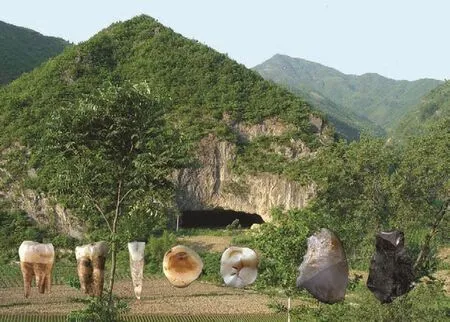
Since the discovery of the Huanglong Cave in Yunxi County, Hubei Province in 2004, three excavations have been conducted there, unearthing seven human fossil teeth, 30 artifacts made by ancient humans, more than 3,000 mammal fossils and other evidence showing human activities.Preliminary analysis indicates that the features of the human fossils resemble those of late Pleistocene humans of China; the stone tools display patterns of both the southern and northern Paleolithic cultures of China;the mammal fossils represent the “Ailuropoda-Stegodon”faunal unit which lived in southern China throughout the Pleistocene.ESR and U-series dating indicate that its age ranges from 103 to 44 Ka.The Huanglong Cave is situated in the West Hubei and Three Gorge regions, where rich human fossils and related resources have been found.Therefore, the human fossils and other related materials from Huanglong Cave will provide important information for research on the origin of modern Chinese.The present project plans to carry out a series of excavations, laboratory analyses and other related studies, trying to find more human fossils and other related materials; and plans to make clear the physical characteristics and behaviors of humans living at Huanglong Cave.The role of the West Hubei and Three Gorge regions in the human evolution in China will be further explored.This project is expected to make some new progress in the late Pleistocene human evolution and modern human origins of China.
Brain Morphology and Cognitive Abilities of Chinese Fossil Hominids
Key words: Human fossil; brain evolution; endocast; 3-D reconstruction; behavior
Chief Scientist: WU Xiujie
Email: wuxiujie@ivpp.ac.cn
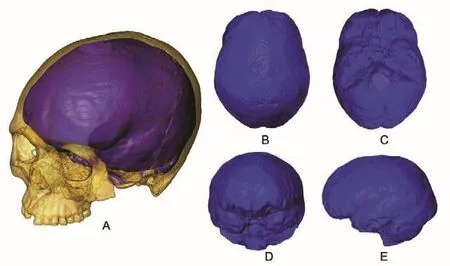
Brain evolution is one of the most important aspects of human evolution, and also is a point of much debate among evolutionary biologists.The direct evidence of the fossil hominid brain’s evolution comes from the endocranial casts(endocasts).Since most hominin fossils are incomplete,or filled with a heavy calcified matrix, it is difficult or often impossible to reconstruct the endocast in a real fossil without destroying it.High-resolution industrial CT and three-dimensional (3-D) laser scanning facilitate new methods to get the virtual brain endocasts of human fossils.Though its human fossils and endocasts are the best in the world, there has been a paucity of paleoneurological studies in China, lagging far behind other countries.Accordingly,the important information retained in the interior of the crania has not been studied.This project studies the brain morphology and evolution of Chinese fossil hominins using CT and 3-D laser scanning, and reconstruct the 3-D brain image and data of Chinses human fossils.Compared with the endocasts of the hominin fossils from Africa, Europe and other Asian regions, the team explores the physical characteristics of the Chinese human fossils.Combining the human remains, palaeontology, and paleoenvironment,the scientists analyze cognitive ability of Chinese ancient humans, and explore the relationship between the human brain and behavior.This study will establish a comprehensive brain evolution database that can be used for additional studies of the evolution of human features, and get new information in light of the origin and evolution of human intelligence.This project will try to get new ideas about brain enlargement in human evolution.
杂志排行
Bulletin of the Chinese Academy of Sciences的其它文章
- Dinosaurs of a Feather
- The Origin and Diversification of Osteichthyans and Sarcopterygians:Rare Chinese Fossil Findings Advance Research on Key Issues of Evolution
- Amazing Reptile Fossils from the Marine Triassic of China
- Advances in Vertebrate Paleontology and Paleoanthropology in China
- Recent Advances in Meso-Cenozoic Fish Research
- Dashankou Fauna: A Unique Window on the Early Evolution of Therapsids
